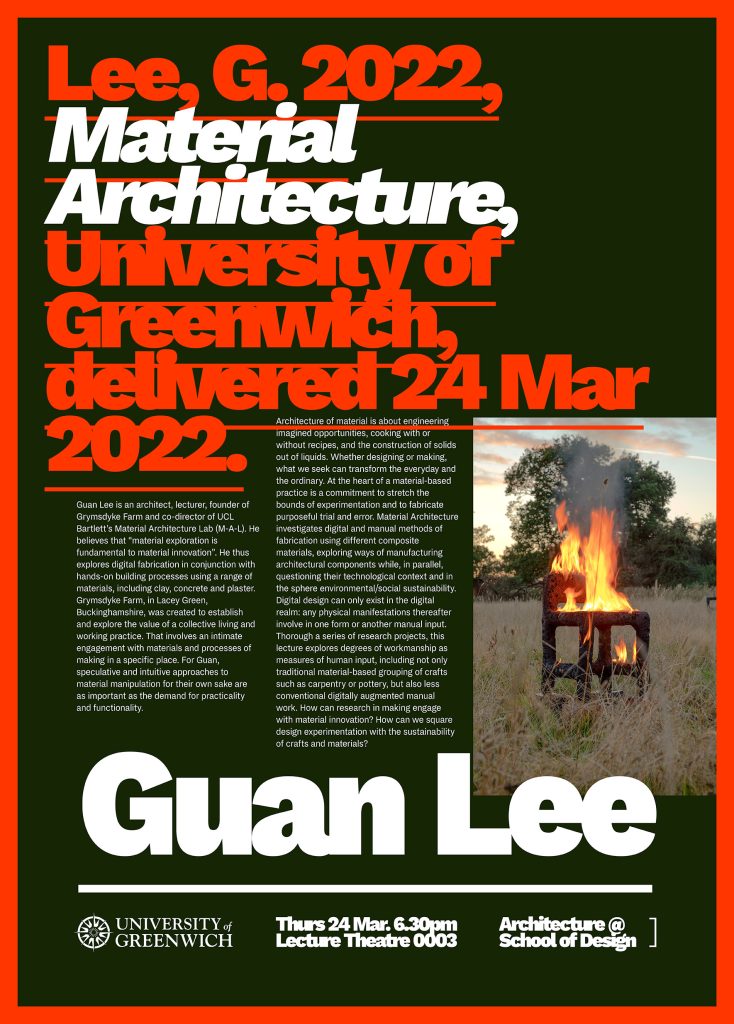Guan Lee Thursday 24th March 2022, 6.30pm Tessa Blackstone Lecture Theatre [0003] Guan Lee is an architect, lecturer, founder of Grymsdyke Farm and co-director of UCL Bartlett’s Material Architecture Lab (M-A-L). He believes that “material exploration is fundamental to material innovation”. He...
Guan Lee
Thursday 24th March 2022, 6.30pm
Tessa Blackstone Lecture Theatre [0003]

Guan Lee is an architect, lecturer, founder of Grymsdyke Farm and co-director of UCL Bartlett’s Material Architecture Lab (M-A-L). He believes that “material exploration is fundamental to material innovation”. He thus explores digital fabrication in conjunction with hands-on building processes using a range of materials, including clay, concrete and plaster. Grymsdyke Farm, in Lacey Green, Buckinghamshire, was created to establish and explore the value of a collective living and working practice. That involves an intimate engagement with materials and processes of making in a specific place. For Guan, speculative and intuitive approaches to material manipulation for their own sake are as important as the demand for practicality and functionality.
Architecture of material is about engineering imagined opportunities, cooking with or without recipes, and the construction of solids out of liquids. Whether designing or making, what we seek can transform the everyday and the ordinary. At the heart of a material-based practice is a commitment to stretch the bounds of experimentation and to fabricate purposeful trial and error. Material Architecture investigates digital and manual methods of fabrication using different composite materials, exploring ways of manufacturing architectural components while, in parallel, questioning their technological context and in the sphere environmental/social sustainability. Digital design can only exist in the digital realm: any physical manifestations thereafter involve in one form or another manual input. Thorough a series of research projects, this lecture explores degrees of workmanship as measures of human input, including not only traditional material-based grouping of crafts such as carpentry or pottery, but also less conventional digitally augmented manual work. How can research in making engage with material innovation? How can we square design experimentation with the sustainability of crafts and materials?








